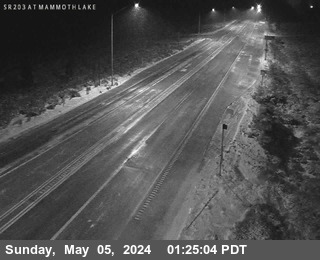Brought to you by Howard Sheckter
Archive for September, 2021
Upper Trof to bring fall weather the next few days with breezy cooler weather and a refreshing of our smokey skies…..Some thoughts about the upcoming winter……
Monday September 27, 2021
Expect cooler breezy weather through Tuesday with gusts in the 40 to 50 mph range at FROPA. Expect high temps cooling to the upper 50s/low 60s in Mammoth the next few days. Nights will chill down into the upper 20s and 30s. Upper Trof will push a mostly dry cold front through our area tonight, Monday night. Winds will be light again in Mammoth Wednesday with north breezes to 15 MPH. By Thursday, upper ridging builds in with the thermal trough shifting to the coast and so offshore flow looks to keep good to moderate air quality over our region into the weekend. By the weekend, a small upper low develops off the coast of Southern CA. It builds heights further over the Eastern Sierra and Great Basin into early next week with even warmer temperatures Monday through Wednesday. The low is expected to open and merge with a trough in the GOA for a return of cooler breezy weather as we move through the 2nd half of next week, in the week two outlook.
Thoughts about ENSO and the upcoming winter:
I have read several articles’ about the upcoming winter. Most give odds of a normal winters worth of precipitation for Central CA, pretty much the same as the forecast made for the winter of 2020/2021. We all know that was a bust for the Sierra. With one of the lowest snowpacks for the central and southern sierra ever recorded. Unfortunately, the accuracy of long range forecasting is not all that great as there is a big differences between a winter that is below normal and one that is historically low in precipitation.
Making the case for ENSO, odds are high again that La Nina will make another appearance this Fall and Winter. Odds are up to 70% A point one should know is that there is a bias for drier than normal winters in CA. for the southern portions, like LA and San Diego, but the odds diminish as you go northward. Northern CA odds for a wetter winter is quite a bit higher than Central CA. If you want to look at the odds, check out Jan Nulls Website of information regarding ENSO for California. He has an excellent climate page and puts relevance of the past, to our current California Drought. https://ggweather.com/links.html
Personal Thoughts’;
Some changes in the climate related teleconnections this fall to last.
- La Nina appears to be weaker than last year this time.
- GOA SSTAs are warmer, as well as the AMO. (two areas that will experience stronger high pressure aloft.
- QBO has moved into its negative phase as of last June.
QBO, MJO and higher probably of Sudden Strato Warm events are of interest according to some research papers.
A strong negative phase QBO suggests a weaker Polar Vortex with stronger blocking over the higher latitudes. Although the odds are highest for the channeling of the Arctic Express to be channeled down through the northern, central planes and Great Lakes regions, especially with a strong Bermuda high and strong high over the GOA, the increased probabilities of more sudden strato warming events are also in the cards. (SSW) The research paper also suggests that the MJO is 40% stronger and last 10 days longer. This all argues for several AR events for the west coast including Northern and Central CA, January, Feb and March. Wet Nina?
PS, The MJO progression and strength, was severely blocked last winter due to the cold water over the central pacific and strong upper convergence over the central eastern pacific.
SEE: https://ncics.org/portfolio/monitor/mjo/
Abstract
The stratospheric quasi-biennial oscillation (QBO) and the tropospheric Madden–Julian oscillation (MJO) are strongly linked in boreal winter. In this Review, we synthesize observational and modelling evidence for this QBO–MJO connection and discuss its effects on MJO teleconnections and sub seasonal-to-seasonal predictions. After 1980, observations indicate that, during winters when lower-stratospheric QBO winds are easterly, the MJO is ~40% stronger and persists roughly 10 days longer compared with when QBO winds are westerly. Global sub seasonal forecast models, in turn, show a 1-week improvement (or 25% enhancement) in MJO prediction skill in QBO easterly versus QBO westerly phases. Despite the robustness of the observed QBO–MJO link and its global impacts via atmospheric teleconnections, the mechanisms that drive the connection are uncertain. Theories largely centre on QBO-related temperature stratification effects and subsequent impacts on deep convection, although other hypotheses propose that cloud radiative effects or QBO impacts on wave propagation might be important. Most numerical models, however, are unable to reproduce the observed QBO–MJO relationship, suggesting biases, deficiencies or omission of key physical processes in the models. While future work must strive to better understand all aspects of the QBO–MJO link, focus is needed on establishing a working mechanism and capturing the connection in models.
More later as La Nina develops…..




